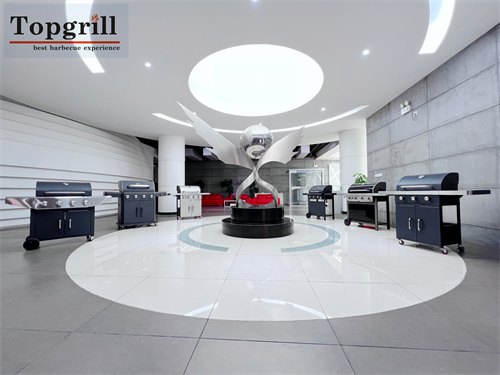How To Use Foshan Topgrill Outdoor Product Co., Ltd.'S Oem/Odm Customization Services To Meet The Personalized Needs Of Different Markets?
In-depth market research and customer communication
Conduct market research: Understand the target market's cultural background, consumption habits, aesthetic preferences, and special requirements for barbecue grill products. For example, in some European and American countries, consumers may prefer large-sized, multi-functional barbecue grills; while in some Asian markets, small, portable barbecue grills may be more popular.
Close communication with customers: Fully communicate with overseas buyers and their end customers to obtain their specific needs and expectations, including product functions, appearance, materials, size, color and other requirements.
Personalized product design and development
Appearance design customization: Design a unique appearance according to the popular trends and customer preferences of the target market. For example, to cater to the outdoor camping style of the North American market, a barbecue grill with a retro and natural style can be designed; for the exquisite and fashionable needs of the European market, a simple and modern appearance style can be created.
Function configuration adjustment: Customize the function of the product according to the lifestyle and cooking habits of different markets. For example, the South American market has unique requirements for the flavor of barbecue, so special smoking functions or specific grill designs can be added; the Australian market, due to its rich seafood resources, can enhance the applicability of barbecue grills for seafood barbecue, such as designing special seafood grills or steam grilling functions.
Material and process selection: Select appropriate materials and processes according to customer needs and market positioning. For the high-end market, high-quality stainless steel, cast iron and other materials can be used, and fine processing techniques such as polishing and brushing can be used to improve the grade and texture of the product; for the mid- and low-end markets, cost-effective materials can be selected to reduce costs while ensuring product quality.

Flexible production and customization mode
Small batch customization: For some emerging markets or customers with special needs, small batch customization services are provided to reduce customers' initial investment risks, help them quickly test market reactions, and adjust product strategies in a timely manner.
Rapid response and adjustment: Establish a rapid response mechanism to adjust product design and production plans in a timely manner according to customer feedback and market changes. If customers find that the product has certain deficiencies or needs to be improved during the trial sales process, they can quickly adjust and re-produce to meet market needs.
Localized adaptation of quality and standards
Meet international standards: Ensure that products meet the international certification standards of the target market, such as CE, LFGB, UL, etc. These certifications are not only the basic requirements for products to enter the market, but also an important basis for ensuring product quality and safety.
Adapt to local specifications: Understand and adapt to the specific regulations, standards and certification requirements of different countries and regions. For example, in the EU market, in addition to CE certification, it is also necessary to pay attention to the requirements of environmental regulations such as REACH for product materials; in the US market, it is necessary to comply with electromagnetic compatibility standards such as FCC.
Optimize supply chain and logistics distribution
Localized procurement and cooperation: Establish cooperative relationships with raw material suppliers and parts manufacturers near the target market to reduce costs while improving the flexibility and responsiveness of the supply chain. At the same time, localized procurement also helps to better adapt to changes in local market demand and adjust procurement strategies in a timely manner.
Customized logistics and distribution solutions: Develop personalized logistics and distribution solutions based on customer needs and market characteristics. For some customers who are in urgent need of goods, expedited transportation services can be provided; for long-term cooperative large customers, special logistics and distribution channels can be established to ensure that products can be delivered to customers on time and accurately.
Personalization of marketing and after-sales service
Customized marketing strategy: Develop personalized marketing strategies based on the characteristics of the target market and customer needs. For example, in markets with active social media, you can use platforms such as Facebook and Instagram to carry out targeted advertising and product promotion; in markets that focus on offline experience, you can assist customers in holding product exhibitions, barbecue events, etc. to enhance product visibility and reputation.
Localized after-sales service: Establish a localized after-sales service team or cooperate with local after-sales service providers to provide customers with timely and efficient technical support and after-sales service. This includes product installation and commissioning, repair and maintenance, spare parts supply and other services to solve customer worries and improve customer satisfaction and loyalty.

